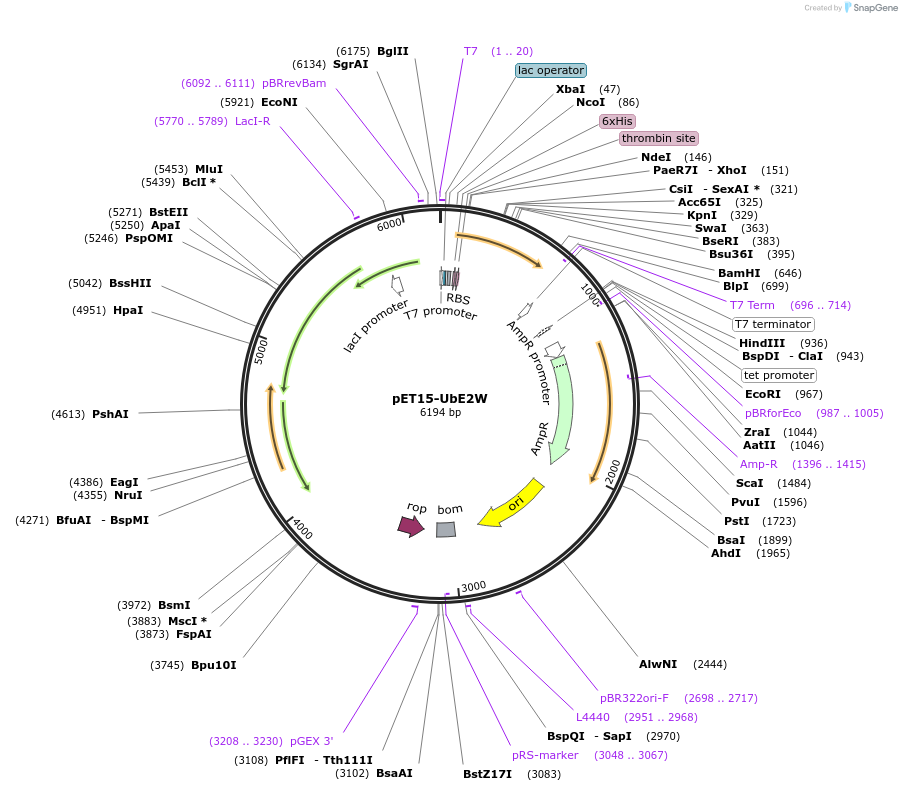-
Depositing Lab
-
Publication
-
Sequence Information
Ordering
| Item | Catalog # | Description | Quantity | Price (USD) | |
|---|---|---|---|---|---|
| Plasmid | 15809 | Standard format: Plasmid sent in bacteria as agar stab | 1 | $89 | |
Backbone
-
Vector backbonepET15
- Backbone size w/o insert (bp) 5700
-
Vector typeBacterial Expression
Growth in Bacteria
-
Bacterial Resistance(s)Ampicillin, 100 μg/mL
-
Growth Temperature37°C
-
Growth Strain(s)DH5alpha
-
Copy numberHigh Copy
Gene/Insert
-
Gene/Insert nameUbiquitin conjugating enzyme UbE2W
-
Alt nameUbE2W
-
SpeciesH. sapiens (human)
-
Insert Size (bp)489
-
GenBank IDNM_001001481
-
Entrez GeneUBE2W (a.k.a. UBC-16, UBC16)
-
Tag
/ Fusion Protein
- His (N terminal on backbone)
Cloning Information
- Cloning method Restriction Enzyme
- 5′ cloning site NdeI (not destroyed)
- 3′ cloning site BamHI (not destroyed)
- 5′ sequencing primer T7
- (Common Sequencing Primers)
Resource Information
-
Articles Citing this Plasmid
Terms and Licenses
-
Academic/Nonprofit Terms
-
Industry Terms
- Not Available to Industry
Trademarks:
- Zeocin® is an InvivoGen trademark.
Depositor Comments
Addgene QC NGS analysis identifies a potential sequence discrepancy in the 3' end of the sequence encoding for LacI in the plasmid backbone. It is unknown what, if any, impact this may have on plasmid function.
These plasmids were created by your colleagues. Please acknowledge the Principal Investigator, cite the article in which the plasmids were described, and include Addgene in the Materials and Methods of your future publications.
-
For your Materials & Methods section:
pET15-UbE2W was a gift from Wade Harper (Addgene plasmid # 15809 ; http://n2t.net/addgene:15809 ; RRID:Addgene_15809) -
For your References section:
Dual E1 activation systems for ubiquitin differentially regulate E2 enzyme charging. Jin J, Li X, Gygi SP, Harper JW. Nature. 2007 Jun 28. 447(7148):1135-8. 10.1038/nature05902 PubMed 17597759



